What to do with Succulents Growing Tall
If succulents don't get enough sunlight they begin to grow tall and stretch out.
In this post I'll show you how to prevent stretching and how to “fix” succulents that are already stretched out and leggy.
Succulents and Sunshine is reader supported. We may earn a commission, if you purchase through links on our site, such as Mountain Crest Gardens, Amazon, or Etsy. We only promote products we use and trust.
I get emails from time to time from panicked readers whose succulents “look different than when I bought them.”
Most of the time, their succulents have become leggy, much taller and spread out. This is quite a common occurrence, especially when you're growing succulents indoors.
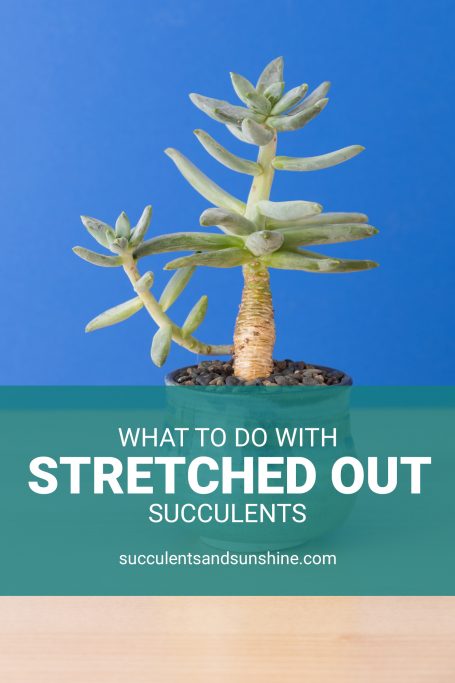
While succulents are fairly slow growing, its amazing how quickly they seem to stretch when they aren't getting the light they need. The technical term for this is etiolation.
A grow light is one of the most helpful ways to prevent succulents from stretching. And getting a grow light doesn't have to be hard or complicated.
Really quick, be sure to grab my FREE watering cheat sheet so you can learn how to tell if your succulents are getting too much water (and how to save them if needed).
Lack of Sunlight
Succulents stretch out when they aren't getting enough sunlight. You'll first notice the succulent start to turn and bend toward the light source.
Then as it continues to grow it will get taller with more space between the leaves.
Most of the time the leaves will be smaller and lighter in color than normal. Generally, lack of sunlight will also cause the succulent to turn green or lose the intensity of it's original color.
Notice how this Echeveria 'Lola' is starting to bend toward the light and it's not quite as colorful as when I photographed it for the top dressings post.
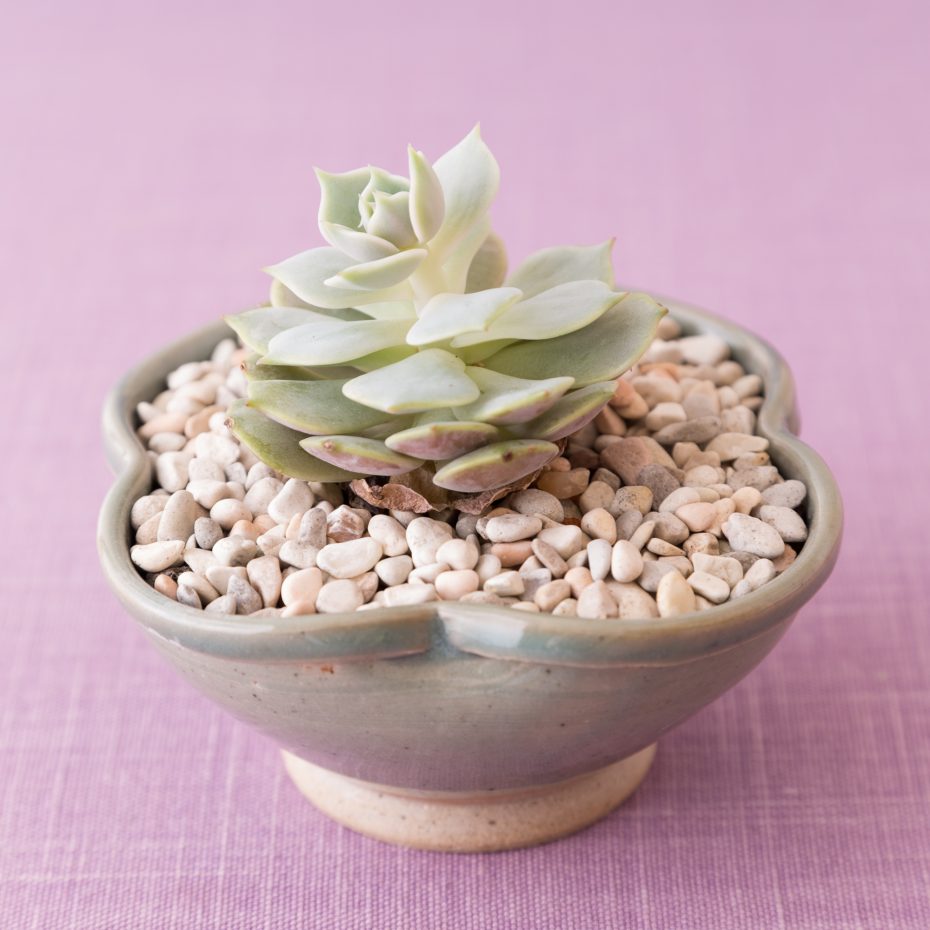
While this will mostly happen with succulents grown indoors, you'll also find it happens outdoors when succulents are in too much shade.
Drooping or flattened out leaves
Sometimes before a succulent leans or gets tall, the leaves will curl backward.
While a tightly curled up succulent is getting plenty of (or too much) sun, one that is flattening out or has it's leaves spreading out is not getting enough. This is one of the earliest signs you'll see that your succulent needs more light.
Is it unhealthy?
While they look better if they get adequate sunlight, leggy succulents will continue to grow in low lighting. They won't be quite as healthy or look as good as they should, but it will generally take quite a while (a year or two) for them to die completely in low light.
If they aren't getting any light though, they'll die much more quickly.
Watch the video below (and subscribe to our YouTube channel for more great videos) to see how to save your succulents that are growing tall!
How to save stretched out succulents
Once a succulent is stretched out, it won't revert back to it's original compact height and shape. Don't worry though!
There is a way to get back to a tight, compact garden again.
Start by cutting off the top of the leggy succulent using sharp scissors (I love, love, love this pair! Absolutely worth every penny!). Leave at least an inch or two on the base with 2-3 leaves. The base will do best if you leave a few leaves to absorb sunlight.
While I've had bare stems send out new offshoots, it takes much longer than when I've kept a few leaves on the stem. If the cutting (the top part you cut off) is too tall for your liking you can cut off some of the stem to make the cutting shorter.
Be sure to leave enough stem on the cutting to plant in soil later.
Let both the cutting and the base dry out for a few days. Once the end of the cutting has calloused over (dried out completely and looks “scabbed”) you can plant it in soil and begin watering it.
I've found that cuttings need to be watered slightly more often than a fully rooted plant, but not much. Make sure you are using a really well draining soil so the stem doesn't get too mushy and rot. You can learn more about propagating succulents from cuttings here.
The cutting should start to put off roots, possibly within a couple days, but definitely within 2-3 weeks. As the roots become more established you'll want to cut back on watering so it's on the same “schedule” as fully rooted plants.
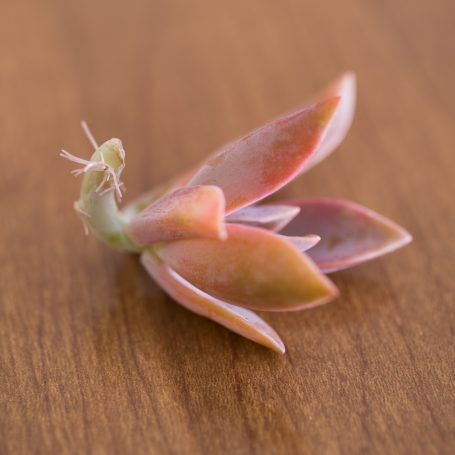
The base, or original plant, will start to put off new offshoots within a few weeks. You can continue to care for this plant the same as you were before making the cut.
The leaves you left on the base plant originally may fall off or die at some point. This is very normal, but won't necessarily happen.
Don't be alarmed if they do fall off though! The new rosettes will still be able to grow without the “parent” leaves.
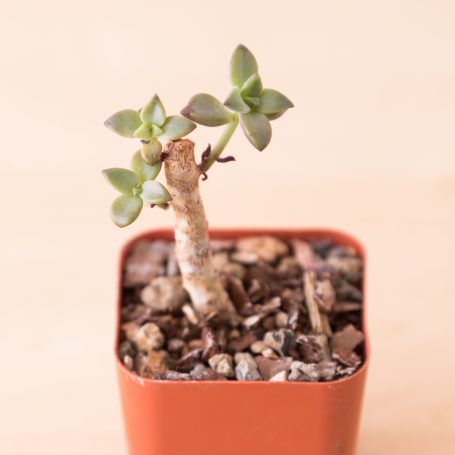
Give them more light
If you have stretched out plants, you can follow the procedure above to promote new growth, but unless you give the plants more light, the cutting and new offshoots will eventually get stretched out as well.
So, before you make the “cut”, try to find an area for your succulents where they will get more indirect sunlight than they did before. If moving them isn't an option, you can also add a grow light to supplement the light they are already getting.
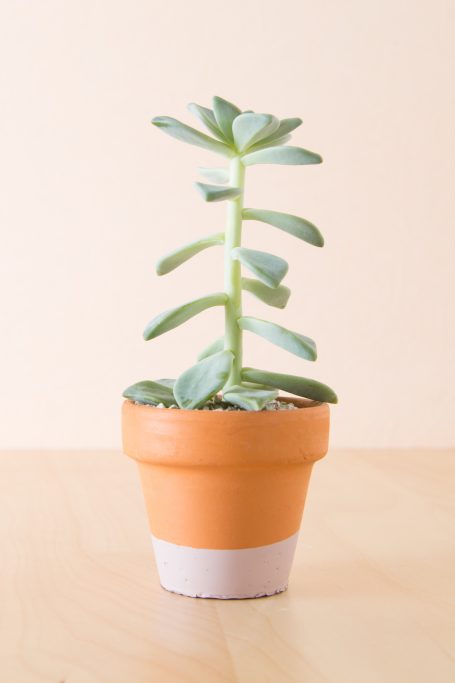
Generally, you want your succulents to get as much indirect sunlight as possible. Indoors this is really difficult. Especially in the winter, it is almost impossible to grow succulents without some stretching.
So now, the next time you notice your succulents are leaning toward the light or getting a little too tall you'll know what to do!
And if you haven't already, be sure to grab the FREE watering cheat sheet so you can learn how to tell if your succulents are getting too much water (and how to save them if needed).